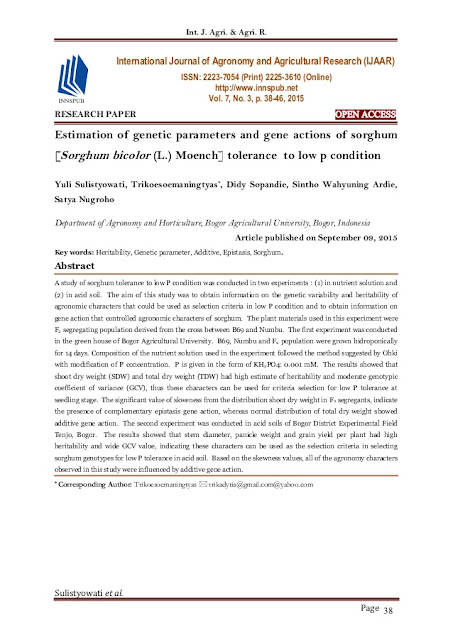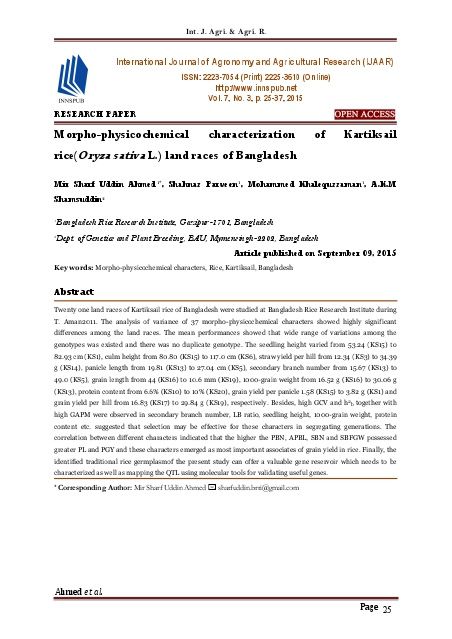Yuli Sulistyowati, Trikoesoemaningtyas*, Didy Sopandie, Sintho Wahyuning Ardie, Satya Nugroho
- Department of Agronomy and Horticulture, Bogor Agricultural University, Bogor, Indonesia
A study of sorghum tolerance to low P condition was conducted in two experiments: (1) in nutrient solution and
(2) in acid soil.The aim of this study was to obtain information on
the genetic variability and heritability of agronomic characters that
could be used as selection criteria in low P condition and to obtain
information on gene action that controlled agronomic characters of
sorghum.The plant materials used in this experiment were F2 segregating
population derived from the cross between B69 and Numbu.The first
experiment was conducted in the green house of Bogor Agricultural
University. B69, Numbu and F2 population were grown hidroponically for
14 days.
Composition of the nutrient solution used in the experiment
followed the method suggested by Ohki with modification of P
concentration. P is given in the form of KH2PO4: 0.001 mM. The results
showed that shoot dry weight (SDW) and total dry weight (TDW) had high
estimate of heritability and moderate genotypic coefficient of variance (GCV), thus these characters can be used for
criteria selection for low P tolerance at seedling stage.The
significant value of skweness from the distribution shoot dry weight in
F2 segregants, indicate the presence of complementary epistasis gene
action, whereas normal distribution of total dry weight showed additive
gene action.The second experiment was conducted in acid soils of Bogor
District Experimental Field Tenjo, Bogor.The results showed that stem
diameter, panicle weight and grain yield per plant had high heritability
and wide GCV value, indicating these characters can be used as the
selection criteria in selecting
sorghum genotypes for low P tolerance in acid soil. Based on the skewness values, all of the agronomy characters
observed in this study were influenced by additive gene action. Get
more articles at: http://www.innspub.net/volume-7-number-3-september-2015-ijaar/

























